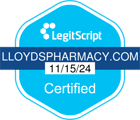Explore more

Gum disease - Gingivitis and Periodontitis
Concerned about gum disease? Find out more about the symptoms, causes and treatment, and what actions you can take to prevent it.
Continue reading
How to help your baby through teething
One of the challenges every parent experiences with their baby is teething. Every child will have a different experience of teething, which is why we've put together our guide to teething.
Continue reading
